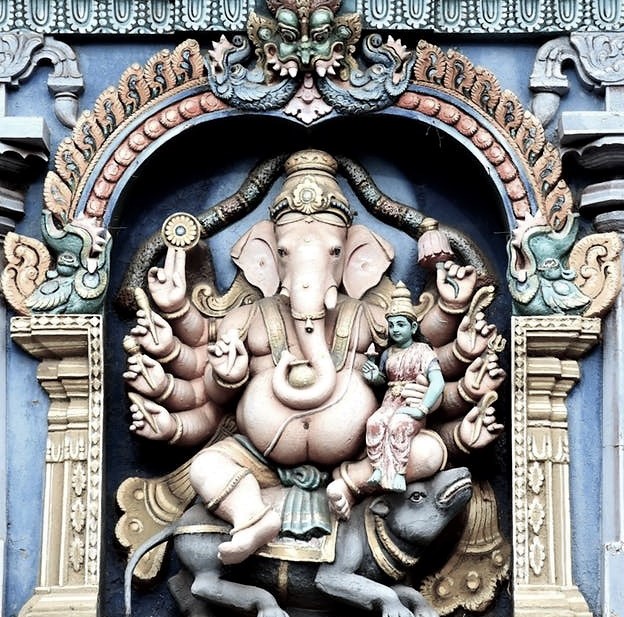- Special FeaturesFoundation YearThe eighth-centurySthala TreeTheerthamRathamArchitectureOther Speciality
- Sthala Puran
The eighth-century Sri Siddhivinayaka Temple at Hattiyangadi in Kundapur taluk is a historical and well-known pilgrimage center for Hindus of the coast. Hattiyangadi (Pattinagara) was the capital of Alupa Kings, who ruled the Tulunadu during the seventh and eighth centuries. They had close ties with some other Jain cities, such as Purigere (Lakshmeeshwara) and Hombuja (Humcha). Later, Hoysala and Honnekambala Kings ruled Hattiyangadi, also known as Goshtipura, as it hosted several intellectual debates.
Hattiangadi, about 8 km to the northeast of Kundapur, which is famous for the ancient Siddhi Vinayaka Temple, also houses many other ancient Temples and Jaina Basadis. Gopalakrishna, Lokanatheshwara, Maraladevi, Shankaranarayan, Shivamunishwara, Ekantheshwara, and Shaktharabrahma Temples are found here.
Hattiyangadi, which was once the capital of Alupa Kings, is now a small village. But it has still managed to retain its attraction with lush green mountains on one side and the curvaceous Varahi River on the other. On the riverbank, there is a spot called Aramane Adi, which earlier housed a palace. At an elevated spot nearby is the Chandranath Basadi, and behind it is the Jattiraya’s Temple.
It was a sacred place for the meditation of Sri Govindarama Yathivarya (Saint) during the 16th century. The Saint blessed his disciple and the then Temple priest Rama Bhatta, who later cultivated several poetic works and got the reputation as Kavi (poet) Rama. The saint had also predicted that the Temple would become famous worldwide during the next three hundred years. What a true prediction it was! Now, the Temple is attracting several devotees from all parts of the world.
Hattiangadi is well known for its Siddivinayaka Temple, which is supposed to have been constructed around the seventh or eighth century.
Sahasra Narikela Ganayaga (a Yaga using 1008 coconuts), Sri Sathya Ganapathi Vratha, Laksha Doorvarchane, Sindhura (kumkum) Archane, and others poojas are offered here for Lord Vinayaka on special occasions such as Sankashtahara Chaturthi, Ganesha Chowthi, Navarathri and on every Tuesday, Friday, and Sunday on the request of the devotees. Devotees are offering poojas such as Ashtadravyathmaka Ganahavana and Trikala Pooja every day.
- Architecture
The Lord Ganapathi Temple is situated on the bank of River Varahi. It is the only Temple in India where the idol of Lord Vinayaka sports a jata-hair. The idol itself is carved of a Saligrama stone and is 2.5 feet high, and Vinayaka’s curly hair is left loose at the back. The trunk is bent towards the left.
It is believed that the idol may be in a standing posture. The deity’s right hand is situated inside the basement and holds a vessel full of Modakas in its left hand. According to experts, the deity is of Bala Ganesha, which has just two arms, and various ornaments are also found on the idol. The statue grows in size every year, which is visible from the fact that it has outgrown the silver casting. The entire shrine is carved from black marble. Since God is supposed to grant the devotees' wishes, the title ‘Siddi’ is conferred on Lord Vinayaka.
- Alankar of Deity
- Prayers and BenefitsSpecial Vratas and PrayersOfferings to DeityStotras and Mantras
- Festivals
- Sodasha Upcharas
- Prasadhas
- Social ActivitiesAnnadhanMarriageEar BoringHead ShaveDanaasEducation FacilitiesSocial DrivesOther Activities
- Arjita Seva
- Tags

